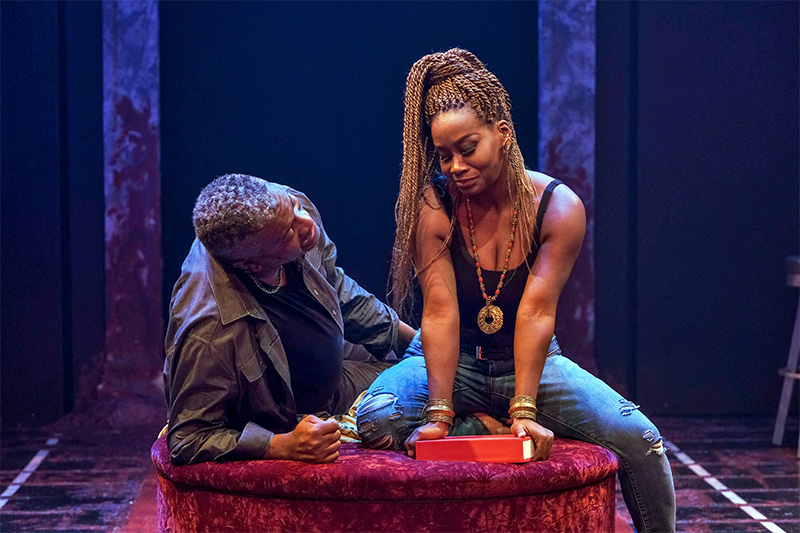“You can’t fly if you have never left the ground,” says Houston’s 4th Wall Theatre cofounder, Kim Tobin-Lehl, when thinking about taking artistic risks.
With different levels of metaphorical imagery, I received this type of answer when asking Texas theater artistic directors what risk means to them. As an arts journalist and critic, I take it for granted that artists perceive a connection between risk, innovation and creation, and that we usually don’t change and grow by creating the familiar over and over.
Yet I wondered how artistic directors balanced taking innovative leaps and playing it safe to survive. I soon found that the key relationship that allowed them to take those risks wasn’t necessarily with fellow artists, as important as those are, but with that tandem passenger going along for that flight—the audience.
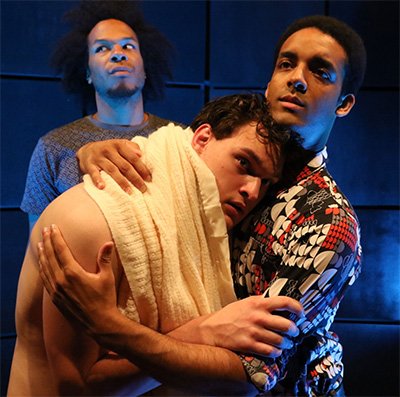
Dana Schultes, artistic director of Stage West in Fort Worth, explains how a theater company is unlike any other kind of company. “This business requires a completely new product to be created every couple of months and the prayer that it will be the right play at the right time and that it will reach the right audience. Companies like Coke are lucky. They have the same product and just change up their marketing. For theater, we painstakingly pick a set of plays. We select directors, designers, casts. Then everything and everyone come together over a three-week period and we hope magic is made.”
In Rice University Business School professor Vikas Mittal’s studies on customer loyalty, he found that sometimes the customer’s relationship with the company and people creating the product was more important than the individual product, that “Customers who liked a company and its employees were more forgiving about perceived glitches in satisfaction.”
From these conversations I had with artistic directors and looking to the research, I realized that to survive such a risky existence theater companies wanting to create challenging and imaginative new work need to build relationships with their audience based on trust and perhaps a sense of adventure.
But before building a relationship with an audience, sometimes the most artistically dangerous thing a company can do is open.
Ashley White, founder of Imprint Theaterworks in Dallas, defined risk as stepping out of the “comfort zone,” but White makes the point that the greatest risk especially for mid-sized or smaller companies comes from the initial leap.
“One of the biggest risks I’ve taken was founding a theatre company,” confesses White. “When we started the idea of forming, there were so many risks involved. What if nobody took us seriously? Where would we perform? How would we stand out among the myriad other Dallas companies? None of those questions could be answered unless we took the leap, followed our hearts and our guts, and went for it.”
Also in Dallas, Bishop Arts Theatre Center is another example that merely building a stage can be a dangerous venture in itself.
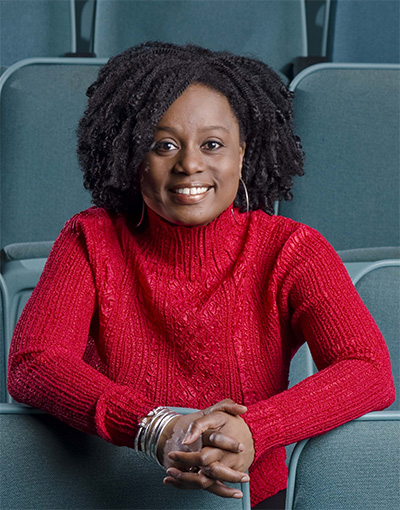
“Not only is BATC an organization of color but we defy the patriarchal order in that our senior level management are women of color,” says Teresa Coleman Wash. “It requires a grit and determination that is almost superhuman for any organization of color to survive in this city.”
For Tobin-Lehl, just continuing to stay open two years ago after announcing they were set to close the theater company was the precarious decision.
“Some might think closing was a big risk but that was a responsibility. We have a clear-cut mission to put artists’ pay first. Some people believed we were in financial trouble, but that was never the case,” she explains that until given new fiscal life from an “angel donor” they could have continued but wouldn’t have been true to their founding mission to support artists.
“Every day is a struggle to survive in many cases, a creative battle to rise above the next hurdle and keep one’s head above water determined to give the gift of storytelling to the community.”
Dan Knechtges arrived at Houston’s Theatre Under The Stars shortly after Hurricane Harvey. Taking his artistic director position in a devastated Theater District, he still was daunted by the thought that it wasn’t just his experience TUTS was bringing in but also his taste, and ideas for programming for this audience, who would at first be strangers.
Dave Steakley, artistic director of Austin’s Zach Theatre, tells a hilarious story about when he first came to Zach as managing director the A.D at the time wanted to “fire” their audience and hire a new one. Yet most companies want to keep their audience while increasing it. This leads to that core question: how do artists best strap in that audience as they set out to make a risky leap into the unknown?
Some of the artistic directors’ solutions mirror client relationships in the business world. According to research co-authored by Rice management professor Erik Dane, giving clients a behind the scenes perspective on the process and complexity can lead to better relationships. The research advises to “Get out from behind the curtain and start talking with your clients as soon as possible. When you can, let them watch you do some of your work so that they can see for themselves how complex and specialized it is.”
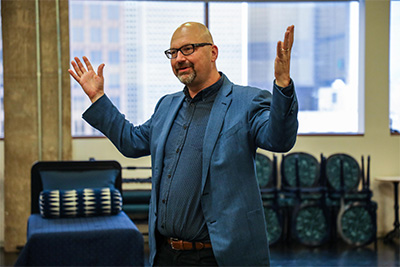
Musing on his evolving relationship with the audience, Alley Theatre’s Rob Melrose describes, “When I was younger, I thought I just wanted to do what I want to do and if the audience comes or doesn’t come I don’t care. As you become fiscally responsible, you think: I’m doing this show. I need a certain number of people to see it, but even so there’s still a lot of room for artistic risk.”
Perhaps the greatest danger for the artist isn’t the fall after taking to the air, but the possibility that they’ve left that most desired companion, the audience, on the ground ready to walk away. But when they can build that trusting relationship with the audience so that they’re willing to make that journey, even the most radical changes can lead to surprising successes.
Dallas Theater Center had such a result when artistic director Kevin Moriarty made one of the most financially dangerous decisions a theater company can make, messing with that tinsel-decorated cash cow, the holiday show. Moriarty believes the company should always offer new and original work or approach familiar work in a new way. Six years ago he made the decision to scrap their old Christmas Carol and build a whole new conceptual Carol with a social justice theme set in a Victorian factory. Every year since they’ve changed some element of the production to keep it fresh.
“In the case of Christmas Carol, it has turned out to be a very financially successful production for us and it continues to be very successful each year because our audience says: I love to see what’s new about this year. Of course we didn’t know that was going to turn out to be that way when we moved to the very traditional production to a very nontraditional production.”
Reflective of Mittal’s company/customer findings, Melrose suggests audiences sometimes willingly go with the unfamiliar and new if they already trust the artists. Luckily he has a resident acting company to help. Melrose brings up some recent Alley history when the company presented the haunting National Theatre of Scotland’s production of Let the Right One In. Though admired by many Houston critics, it wasn’t the biggest hit. Melrose thinks the slight audience response might have been caused by the fact the Alley presented the production without any creative input or local actors in the cast.
“The cool thing about our audience is that they’re willing to go out on a limb if they recognize the actors: This is our gang, and they’re in this crazy show that I don’t completely understand, but I’m much more willing to go with it because I recognize everybody.”
Steakley adhered to this idea last spring when directing the world premiere musical, The Ballad of Klook and Vinette, but he made certain to cast two Zach audience favorites.
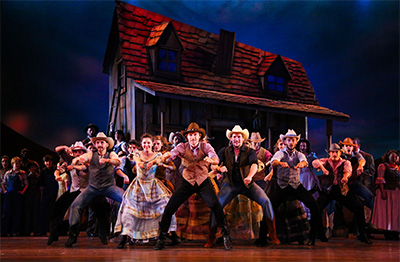
For the first show of TUTS’s 50th season, Knechtges brought together well known and beloved artists for an untried Texas partnership to revive Oklahoma. He asked Kevin Moriarty to direct and Houston Ballet Artistic Director Stanton Welch to choreograph, with many Houston Ballet dancers joining the production. While the players might have been familiar, the unusual nature of the collaboration required that leap into the unknown. The results? One of the most acclaimed productions of the 2018 performing arts season.
Many of the artistic directors I spoke with said that foreknowledge also keeps that relationship between company and audience in better terms. Melrose, who founded the San Francisco avant garde Cutting Ball Theatre, believes you have to prepare audiences to enter that undiscovered theatrical country to get them to return.
This audience education also mirrors Dane’s research on informing clients. The study finds: “Professionals should give their clients a big-picture overview of their work and its value, as well as its scope and complexity.”
“Education is the key to growing your audience, both growing as in more people but also in the people you currently have being more willing to see different kinds of stuff,” notes Melrose, comparing that education to docent and outreach programs at the museums. “The more you learn, the more exciting it is.”
Steakley makes similar points for maintaining that two-way connection between company and community.
“I used to think there were parts of the process that you didn’t want to reveal or you would be giving away pivotal secrets.” He has since realized: “I need audiences to get as much information as they want in advance.” For Zach that can mean anything from open rehearsals to once making a mass purchase of scripts of Suzan-Lori Parks’s The America Play script which he mailed to potential audiences in advance.

“A smart artistic director is collaborating with their education and community outreach and marketing departments to try to invite the audience into that creative process before and after the production, so the audience has a way to share that risk, to be a part of that excitement,” explains Moriarty, who found that collaboration vital when they created a new production of the 2500-year-old drama Electra that required the audience to wander around outside wearing headphones.
Melrose advises using techniques like talk forwards, docent talks and dramaturgical packets help to prepare audiences for the experimental. “So you’re not just dropping something crazy in their laps.”
Soon after Knechtges arrived at TUTS, the company began such a preparation program with their Spotlight series. Spotlight allows musical theater lovers to get an intimate look at the creative process while meeting some of the backstage and onstage artists from each show.
For Wash and BATC forging that relationship with the community began immediately as they made the move into the Bishop Arts area.
“We held focus group meetings and what we learned was parents wanted after school and summer programs for their students. Playwrights needed space to develop their work, and artists needed somewhere to hone their craft,” she says, adding, “The community’s responses informed our program offerings.”
Of course, not every risk leads to artistic reward, yet many times floundering brings lessons worth the price. Even with audience preparation, Steakley reveals The America Play production was not a big ticket-seller, but it led to a relationship with Pulitzer Prize-winning Parks and the designers who worked on that production that still flourishes.

Wash says when BATC decided to program a series of Neo-soul concerts, they did so without checking in with their audience to see if anyone was clamoring for the genre. Then ticket sales proved they weren’t. She was reminded to listen to what the community needs and to assure that when they’re ready to talk, she hears.
In the end, the takeaway from Mittal’s research that “customer loyalty often depends less on what a customer thinks of a product—and more on what she thinks of the people behind it,” gives evidence to the type of relationships some of these theaters have created with their audiences so they can take those risks, sometimes falling, but occasionally soaring into a higher artistic atmosphere.
“The only thing certain in making art is its uncertainty,” says Moriarty. “That’s why all of us who make art rely on patrons, donors and audience members who lean into that, who experience art with an open heart and open mind. The audiences who come up to me at the end of the show and say: That one didn’t work. I didn’t like it. I’ll see you next time. Those folk are the ones who allow great art to get made because they inspire you to keep walking on the edge.”
—TARRA GAINES

